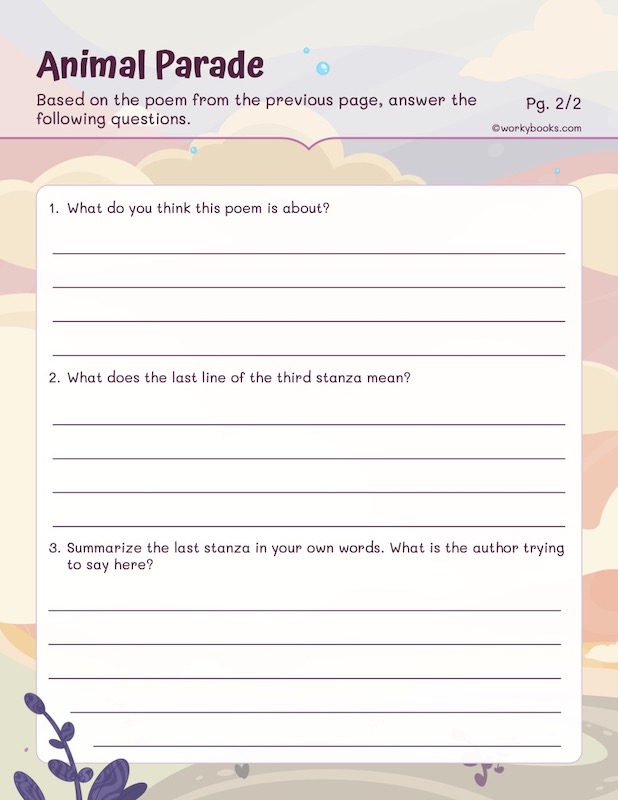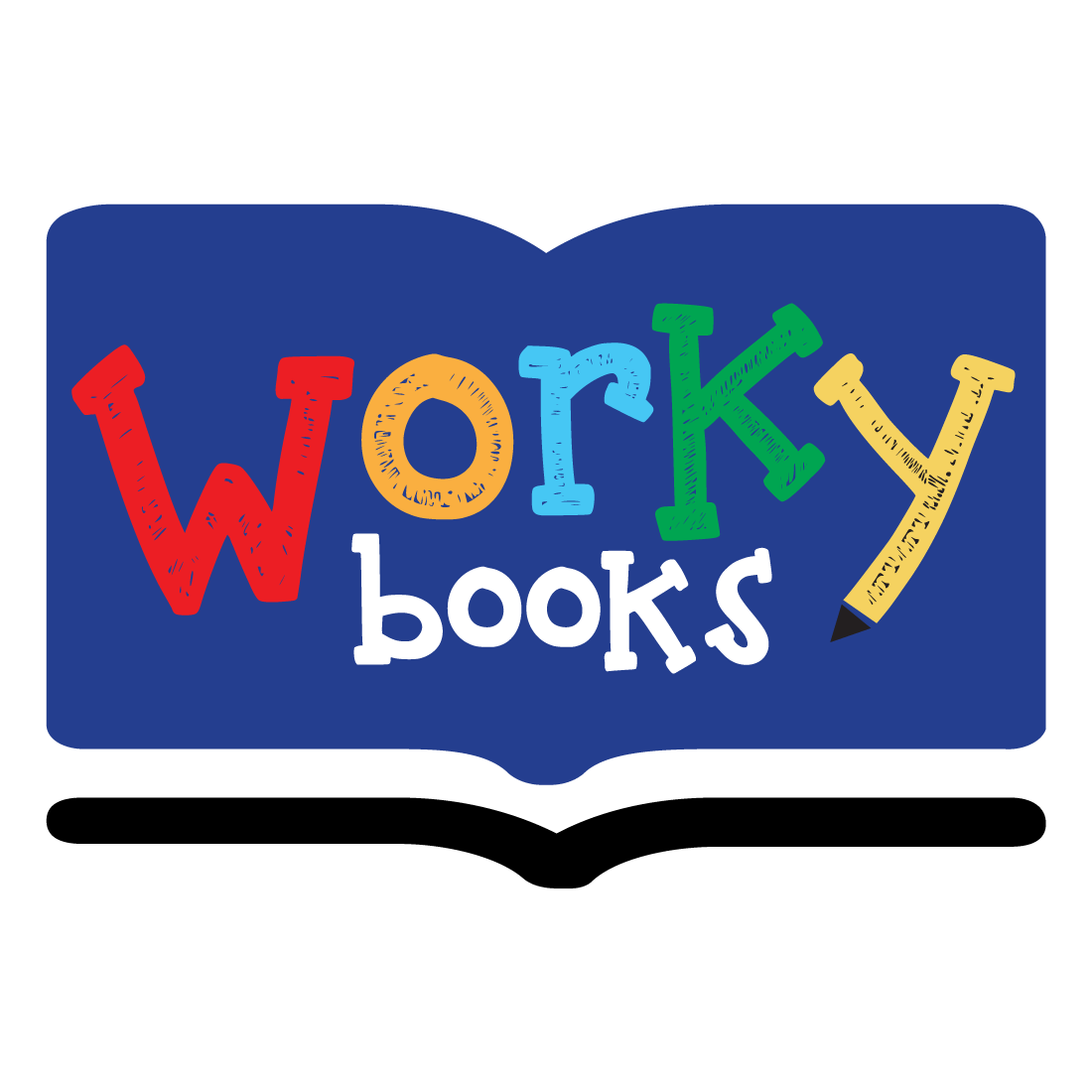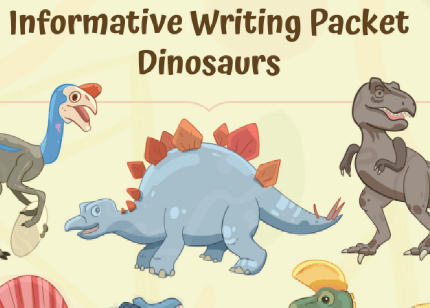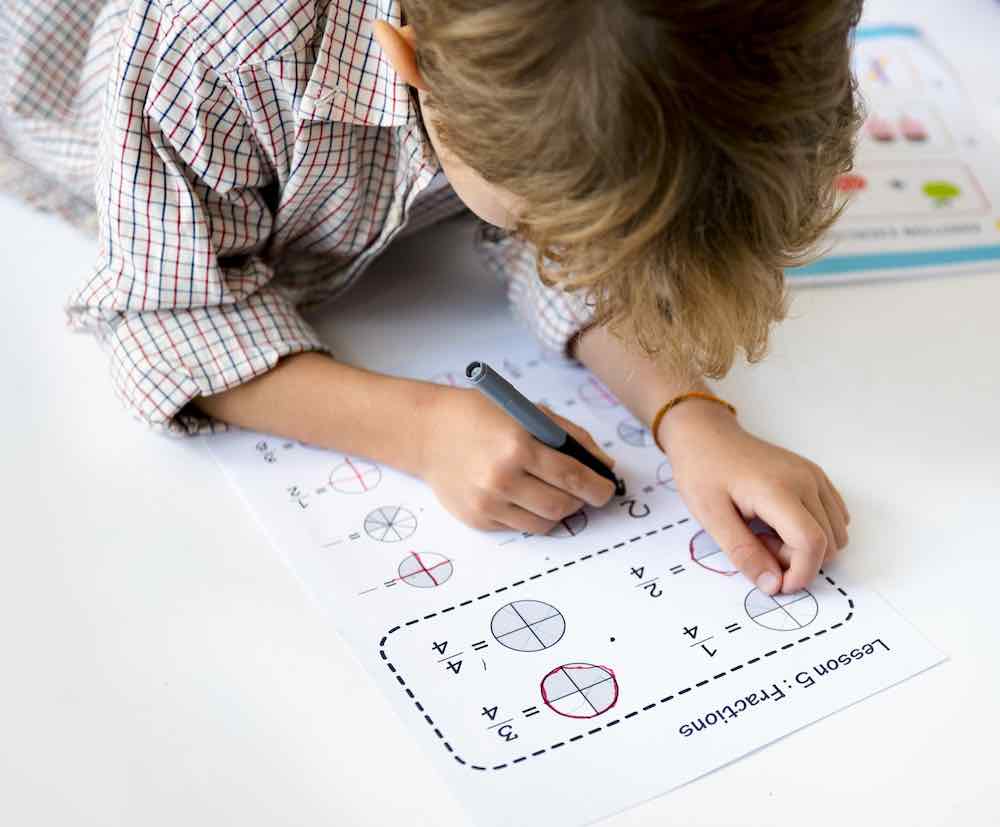CCSS.ELA-LITERACY.RL.3.5 Aligned Worksheets
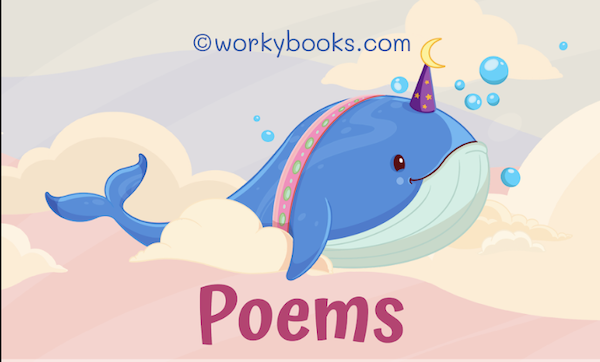
The Common Core State Standards (CCSS) provide a framework for ensuring students develop the skills they need to succeed academically. For 3rd grade students, the CCSS.ELA-LITERACY.RL.3.5 standard focuses on referring to parts of stories, dramas, and poems when writing or speaking about a text, using terms such as chapter, scene, and stanza. This standard is crucial for developing strong reading comprehension skills and a deep understanding of literary texts.
To help students meet this standard, educators can incorporate engaging third grade reading activities, 3rd grade common core standards printable worksheets, and materials tailored to the third grade reading level.
Third Grade Reading Activities – RL.3.5
Effective third-grade reading activities should be interactive and encourage students to analyze the structure of various literary texts. Some ideas include:
- Story mapping: Have students create visual representations of a story’s plot, characters, and settings.
- Dramatic reenactments: Encourage students to act out scenes from plays or poems to better understand their structure.
- Compare and contrast: Ask students to compare the structure of different types of texts, such as poems and prose.
Third Grade Reading Level for CCSS.ELA-LITERACY.RL.3.5
When selecting materials for teaching the CCSS.ELA-LITERACY.RL.3.5 standard, it’s essential to choose texts appropriate for the third-grade reading level. This ensures that students can focus on analyzing the structure of the text without struggling with decoding or vocabulary.
By incorporating a variety of third grade reading comprehension activities, 3rd grade language arts worksheets, and reading comprehension worksheets for grade 3 pdf, educators can help students master the skills outlined in the CCSS.ELA-LITERACY.RL.3.5 standard and develop a strong foundation in literary analysis.
For more poems and resources to support the ccss ela standards, visit our library of printable worksheets and activities.
Here is another useful blog on best short poems for kids by Workybooks!
3rd Grade Common Core Standards Printable Worksheets
Printable worksheets aligned with the 3rd grade ela standards can provide targeted practice for referring to parts of stories, dramas, and poems. Here are three worksheets designed to help students master this skill:
1. Summer Poetry:
This free verse poem on summer helps students become familiar with reading poetry and answering comprehension questions that require them to analyze the text and use context to learn new vocabulary.
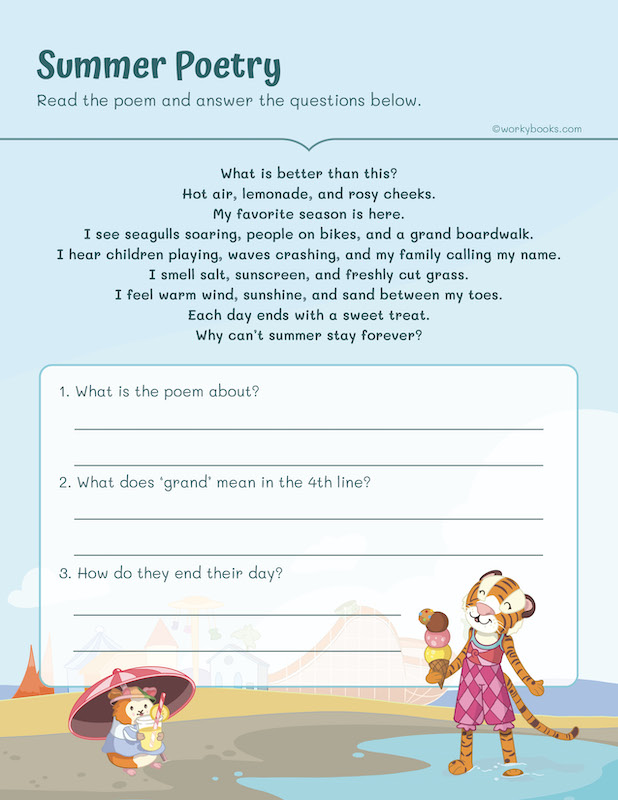
2. If It Were Up To Me
Poem: Students can relate to this poem about being the boss! Have them read it aloud to practice appropriate rate and expression, then answer comprehension questions to reinforce understanding. By engaging with this playful and relatable poem, students will work towards mastering the CCSS.ELA-LITERACY.RL.3.5 standard.
The poem “If It Were Up To Me” is a delightful and relatable piece that captures the whimsical desires of a young child. Accompanied by professionally illustrated graphics, this original poem takes readers on a journey through the imagination of a child who dreams of a world where they make the rules.
The vibrant illustrations bring the poem’s playful scenarios to life, making it easy for students to connect with the author’s ideas. From images of desserts for every meal to depictions of endless playtime, the graphics enhance the poem’s appeal and engage young readers.
As students read through the poem, they’ll encounter a series of “If it were up to me” statements that showcase the author’s wishful thinking. The child in the poem dreams of a world where candy has healing powers, recess lasts twice as long, and chores are nonexistent. These imaginative scenarios encourage students to think about their own wishes and desires, fostering a connection between the reader and the text.
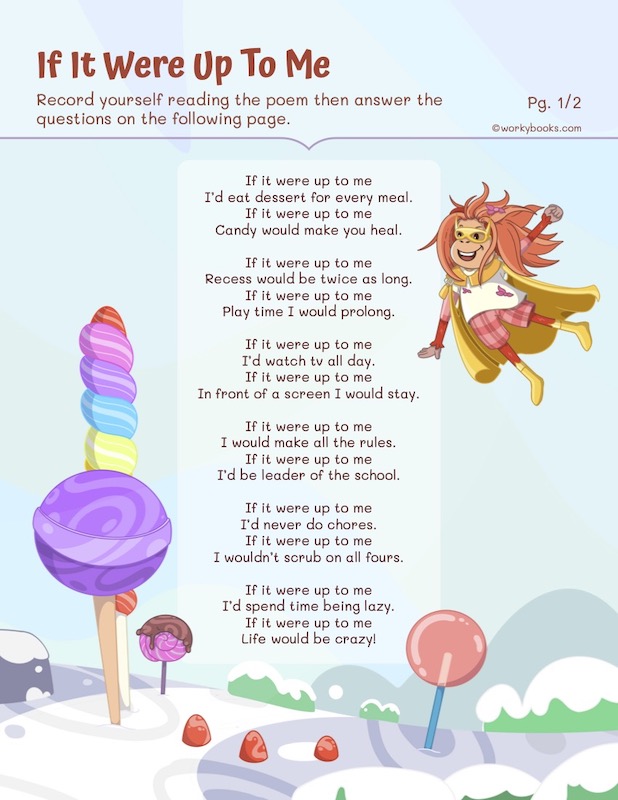
The poem’s structure, with its repeated “If it were up to me” lines, makes it easy for students to follow along and anticipate the next wish. This repetition also emphasizes the central theme of the poem: the joy of imagining a world where children have the power to make decisions.
After reading the poem, students can answer comprehension questions that prompt them to analyze the author’s perspective and intentions. For example, they might be asked to describe the author based on the wishes expressed in the poem or to interpret specific lines, such as “I wouldn’t scrub on all fours.” These questions encourage students to think critically about the text and develop their reading comprehension skills
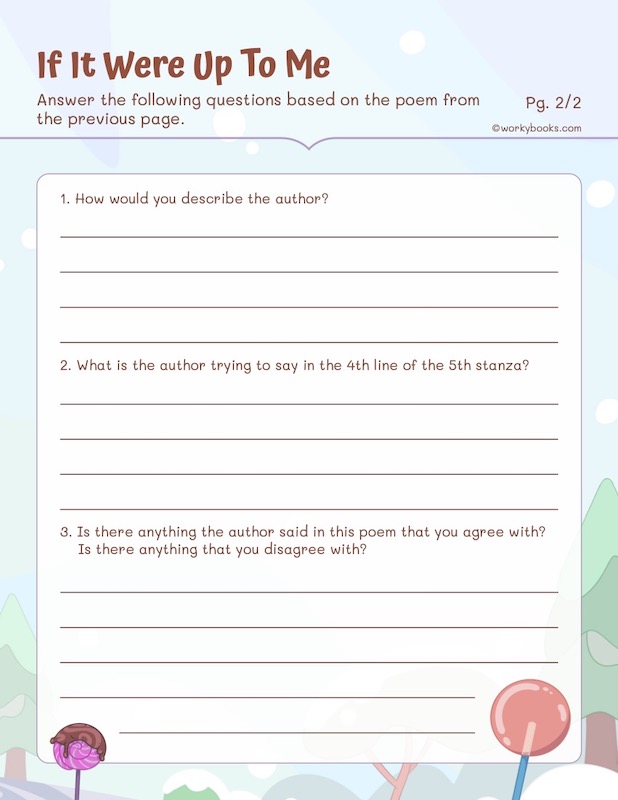
3. Animal Parade Poem:
This rhymed poem with comprehension questions from the Workybooks library is whimsical and engaging, grabbing students’ attention while helping them practice reading poetry. The Animal Parade poem is an enchanting piece that sparks children’s imagination and encourages them to look at the world with a creative eye. This original poem, accompanied by professionally illustrated graphics, takes young readers on a whimsical journey through the clouds.
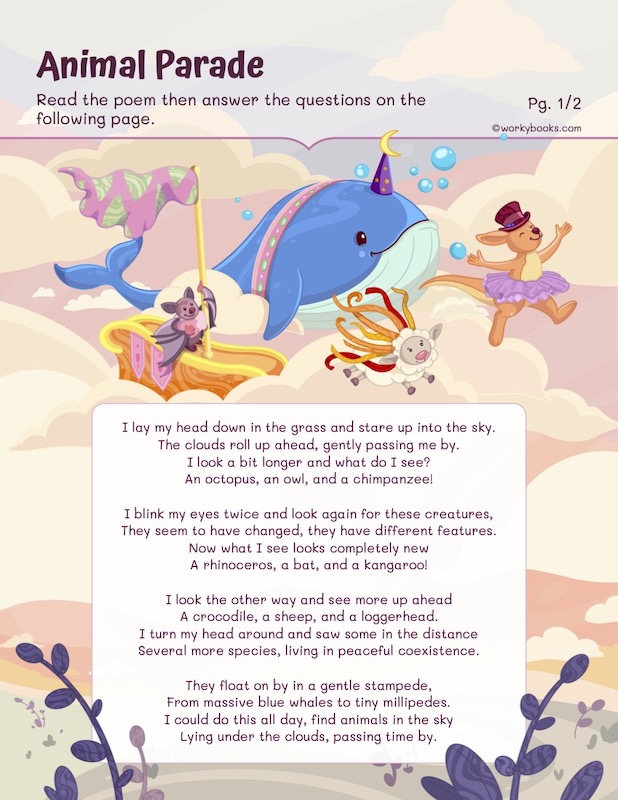
As students read the poem, they’ll discover a menagerie of animals taking shape in the sky above. From an octopus and an owl to a rhinoceros and a kangaroo, the clouds transform into a delightful array of creatures. The poem’s vivid imagery and playful rhyme scheme make it an engaging tool for practicing reading skills and exploring the power of imagination. After reading the poem, students can answer comprehension questions that encourage them to reflect on the poem’s meaning and the author’s intent.
For example, they might be asked to summarize the last stanza in their own words, prompting them to think critically about the message behind the whimsical imagery.
